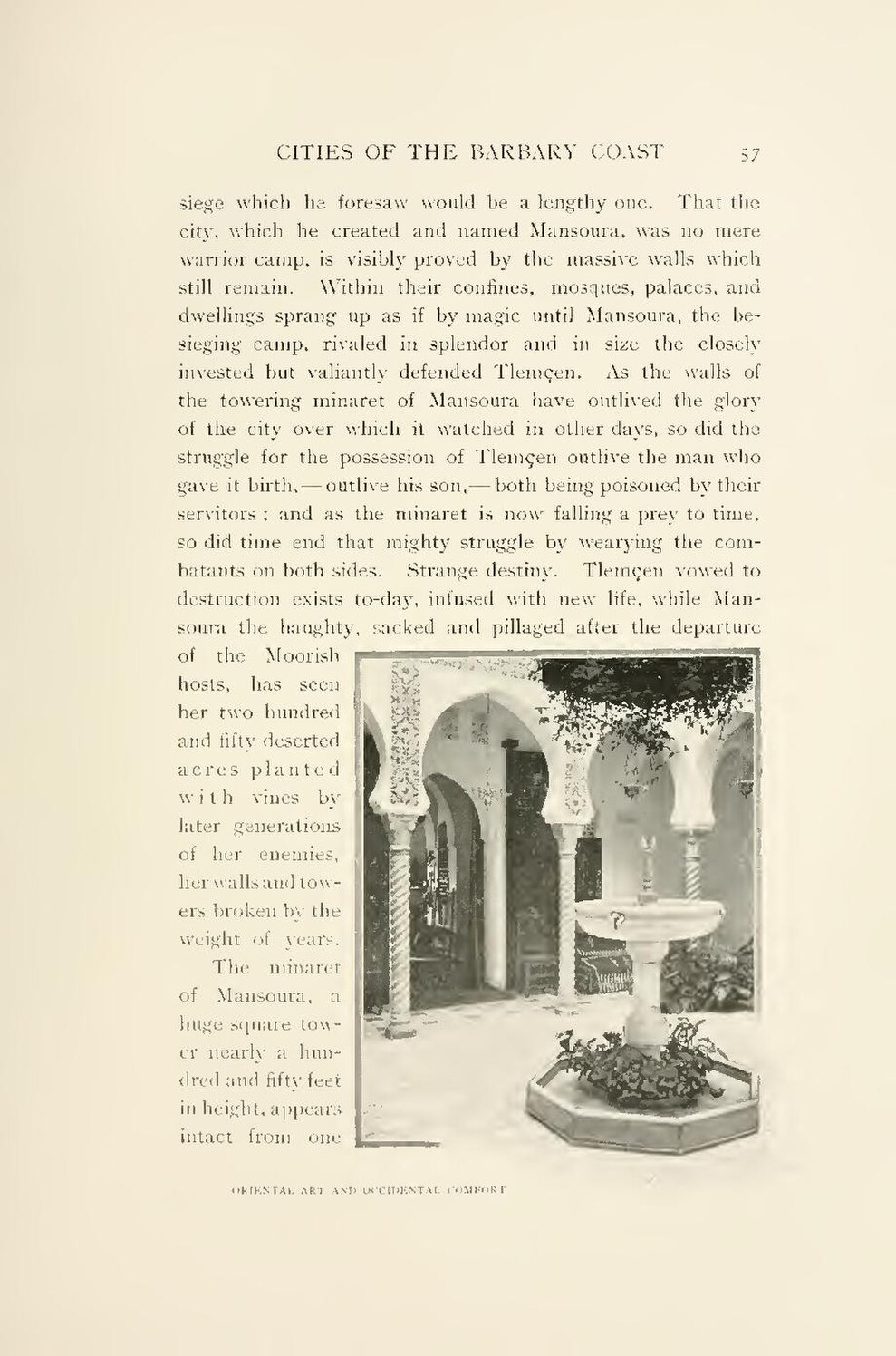siege which he foresaw would be a lengthy one. That the city, which he created and named Mansoura, was no mere warrior camp, is visibly proved by the massive walls which still remain. Within their confines, mosques, palaces, and dwellings sprang up as if by magic until Mansoura, the besieging camp, rivaled in splendor and in size the closely invested but valiantly defended Tlemçen. As the walls of the towering minaret of Mansoura have outlived the glory of the city over which it watched in other days, so did the struggle for the possession of Tlemçen outlive the man who gave it birth,—outlive his son,—both being poisoned by their servitors; and as the minaret is now falling a prey to time, so did time end that mighty struggle by wearying the combatants on both sides. Strange destiny. Tlemçen vowed to destruction exists to-day, infused with new life, while Mansoura the haughty, sacked and pillaged after the departure of the Moorish hosts, has seen her two hundred and fifty deserted acres planted with vines by later generations of her enemies, her walls and towers broken by the weight of years.
An image should appear at this position in the text. To use the entire page scan as a placeholder, edit this page and replace "{{missing image}}" with "{{raw image|The Burton Holmes lectures; (IA burtonholmeslect04holm).pdf/69}}". Otherwise, if you are able to provide the image then please do so. For guidance, see Wikisource:Image guidelines and Help:Adding images. |
ORIENTAL ART AND OCCIDENTAL COMFORT
The minaret of Mansoura, a huge square tower nearly a hundred and fifty feet in height, appears intact from one
